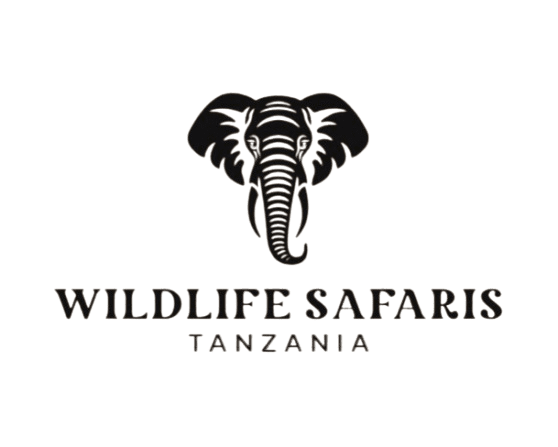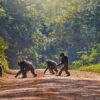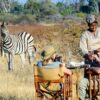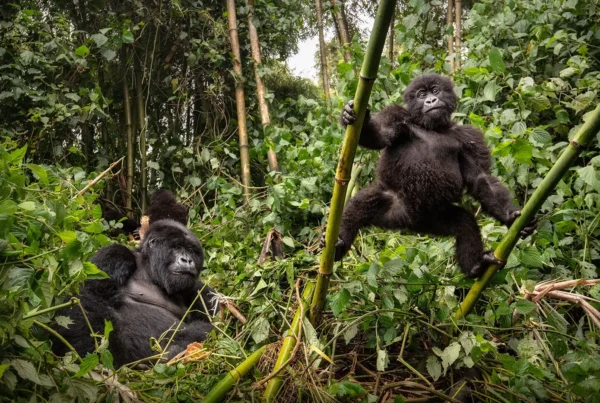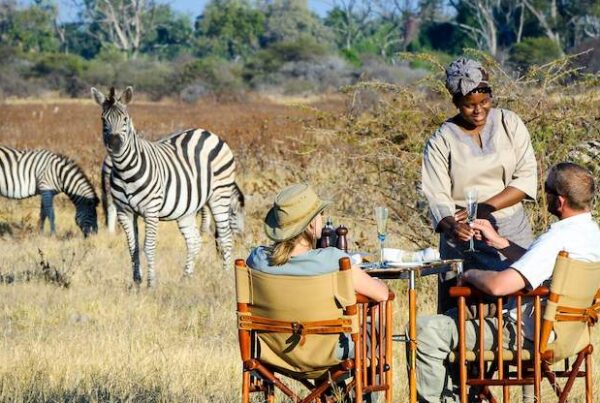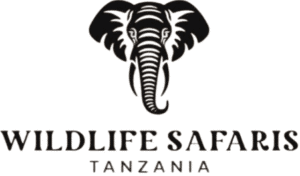What are Tanzania’s Big Five Parks?
African wildlife, especially the Big Five: rhino, elephant, lion, and leopard, is in high demand. Indeed, they are a big reason why so many people travel to Tanzania. Based on our reservations, we estimate that 75% of safari goers to Tanzania are hoping to see the Big Five. This post will go over the top places to see all of these amazing animals together.
What do you think? Let’s take a moment to wonder about this before we jump in. The “Big Five”—what does that name mean? Do any other big creatures exist in nature except these? Obviously not. Just because they’re called the “Big Five” doesn’t imply they’re massive, albeit a few of them are. Consider this tale:
Traditional hunting methods involved venturing out into the wilderness on foot. They did this in order to win prestigious awards. However, they were afraid to go on foot in pursuit of these five beasts. For the simple reason that these creatures are deadly to or very hurtful to hunters when cornered or hurt. The politeness of some of them reminded me of a buffalo, which, when angered, never forgives. Even though it seems harmless at first glance, an enraged elephant may transform into a lethal weapon.
Stop being such a peddler! Return to the original topic. There are four locations in Tanzania—the Serengeti, Ngorongoro Crater, Nyerere, and Mkomazi—where you can see all five of the Big Five.
Let’s take a look at each one in turn.
The Serengeti National Park.
You may observe these creatures in their native environments in the Serengeti. They are all able to live in their preferred environments because to the Serengeti’s many ecosystems.
As predators, the lions live in the plains. Lions tend to congregate in the southern and central Serengeti areas due to the predominance of grasslands there. While traveling through the Seronera Valley and farther south, it is not uncommon to see lions. The Serengeti is Tanzania’s premier lion viewing destination, home to more than 3,000 majestic felines.
For the most part, elephants may be seen anywhere throughout the park. Even huge groups of elephants have been spotted in Lobo. Bulbs of buffalo often number 400 and are led by a small number of dominant males. Wherever they go, they feast on tall grass, which they find in forests and plains.
Very seldom do you see a leopard in the wild. Napping in trees (especially acacia and sausage trees) is a great way for them to escape the heat and keep predators like hyenas at bay. Out of the Big Five Serengeti animals, rhinos are the most uncommon. This is due to their limited population size as well as their solitary nature. Roughly eighty black rhinos roam the Serengeti. The Moru Kopjes, located in the south-central area, provide better chances.
Crater of Ngorongoro.
This little but continuous caldera provides vistas of the Big Five despite its little size. Not to mention, you can see them more clearly here than in the Serengeti. Why? The black rhino, being the rarest and hence most limiting species, is plainly visible in the crater. Only thirty rhinos inhabit the crater. The plains that make up their habitats, however, make these creatures easy to spot.
There are about 65 to 75 lions in the wild. Additionally, buffalo and elephants are commonplace on the ground. Leopard populations are showing signs of improvement. The Lerai Forest is a good place to see them because that’s where they hang out in the trees.
The sanctuary of Nyerere.
Although it is sometimes overshadowed by its northern sister parks, Nyerere is proud to have the Big Five. This park guarantees that every one of the big five may find its ideal habitat, thanks to its varied topography that includes wide plains, riverine forests, thickets, and acacia woodlands:
For better scanning and chasing of prey, lions do best on plains; elephants, on the other hand, adore riverine woods along the Rufiji River for their branch-feeding capabilities; and leopards, on the other hand, appreciate acacia and riverine forests for the trees that best suit their needs.
Leopards and black rhinos necessitate unique methods of discovery, in contrast to the plethora of elephants, buffalo, and lions. However, you will be among the fortunate ones to be able to check all the boxes thanks to our guides who are well-versed in Nyerere. In addition to going on a hunt for the Big Five, you can also go fly camping or take a boat ride along the Rufiji River.
National Park of Mkomazi.
Surprisingly, despite its distant location in northeast Tanzania, the park delivers. All five of the big five call Mkomazi, which stretches all the way to the Kenyan border, home. In their native environments, you can see lions, leopards, elephants, and buffalo; in protected areas, you can see rhinos.
More than thirty-five rhinoceros call a rhino sanctuary home, which opened its doors in 1991. As of 2025, tourists may fulfill their ambition to view rhinos and the other Big Five species in this park, which began allowing rhino tourism in 2021. African wild dogs are just one of the unusual creatures that call this area home. Zebras, giraffes, wildebeests, and spotted hyenas are among the other creatures.
Concluding remarks…
The ultimate goal of any safari traveler is to see the Big Five in the same location. We are certain that you will be able to complete them by visiting these notable locations. Also, we’re happy to provide a hand in finding these adorable animals. Your Big Five safari is in good hands with us. Thus, let us begin organizing your ideal journey.
